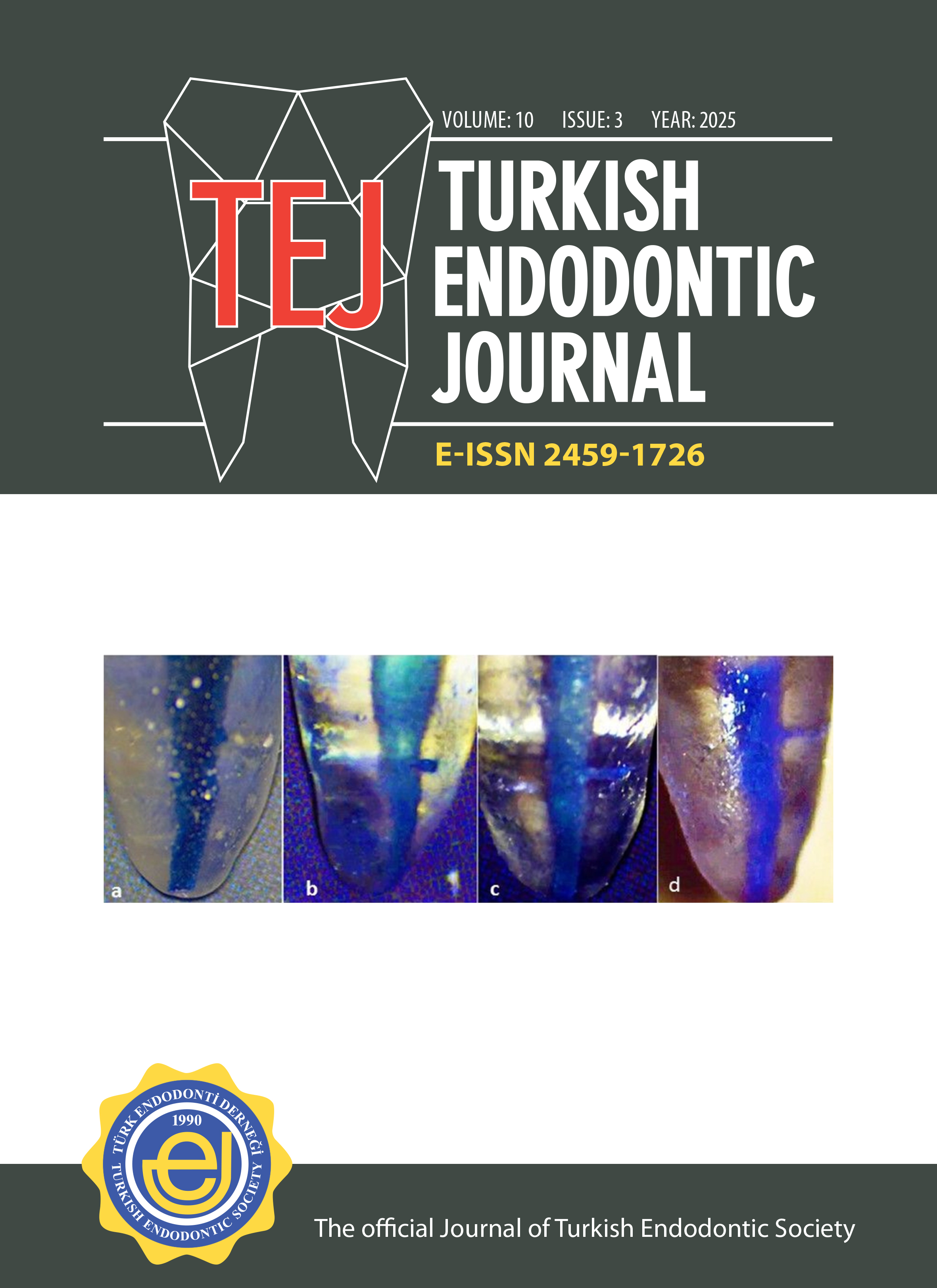Micro-computed tomography analysis of root canal orifices in maxillary fused molars
Defne Toplu, Cangül Keskin, Ali KeleşDepartment of Endodontics, Ondokuz Mayıs University Faculty of Dentistry, Samsun, TurkeyPurpose: This study outlines a two-dimensional analysis of root canal orifices in maxillary second molars showing different types of root fusion.
Methods: A total of 150 extracted fused maxillary second molar teeth with mature roots free of fractures, or deep caries extending to root dentine, were scanned on a micro-computed tomography (micro-CT) device (SkyScan 1172, Bruker-micro-CT, Kontich, Belgium) at 9 µm (pixel size), 100 kV, 100 µA. Specimens were classified according to the fusion type. In each specimen’s axial slices of the pulp chamber floor, the area, perimeter, roundness, major diameter, and minor diameter values were measured. One-way analysis of variance test followed by post hoc Tukey test was performed to evaluate the area, perimeter, roundness, major diameter, minor diameter, and interorifice distances between different fusion types.
Results: The perimeter and area of the mesiobuccal 2 (MB2) canal orifice were statistically smaller than other orifices in all fusion types (p< 0.05). Major and minor diameter values of MB2 were also significantly smaller than that of mesiobuccal (MB) in fusion types 1 to 4 (p< 0.05), apart from type 6, in which major and minor diameters of MB, MB2, and distobuccal orifices were similar (p> 0.05). The largest area and perimeter values were measured in the palatal (P) canal orifice irrespective of the fusion type (p< 0.05).
Conclusion: The fusion type does not affect the area and minor diameter of the canal orifices. All morphological parameters examined were similar for MB and MB2 canal orifices regardless of the fusion type.
Keywords: Anatomy, endodontics, maxillary molar.
Manuscript Language: English



















